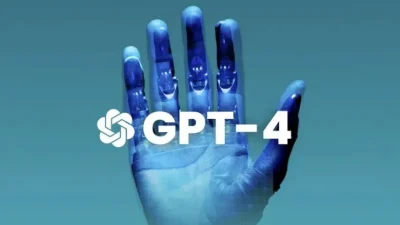The rise of powerful AI tools like GPT-4 has opened new frontiers in technology, offering unprecedented capabilities in fields ranging from education to medicine. However, with such potential comes significant responsibility. Ethical considerations are crucial to ensure that these tools are used appropriately, without causing harm or perpetuating biases. This article delves into why ethics are essential in the deployment and use of GPT-4 and similar AI technologies.
Understanding the Impact of GPT-4
GPT-4, a cutting-edge language model developed by OpenAI, has revolutionized the way we interact with machines. Its ability to understand and generate human-like text has enabled advancements in numerous sectors. However, its immense power also poses challenges. Improper or unethical use can lead to misinformation, harm to individuals or groups, and the amplification of societal biases.
Key Areas of Impact:
- Education. GPT-4 enhances learning through personalized tutoring but can be misused for academic dishonesty.
- Healthcare. It aids in research and patient interaction but must ensure patient privacy and avoid misdiagnosis.
- Business. Companies leverage GPT-4 for customer service and content creation, raising concerns about job displacement and transparency.
These examples underscore the dual-edged nature of AI. Ethical guidelines are essential to maximize benefits while minimizing risks.
Ethical Principles for Responsible AI Use
Adopting clear ethical principles ensures that AI tools like GPT-4 are deployed responsibly. These principles guide developers, businesses, and users in making informed decisions about their interactions with AI.
1. Transparency
Transparency involves clear communication about how GPT-4 functions and its limitations. Users should understand when they are interacting with an AI and the data it uses to generate responses.
Benefits of Transparency:
- Builds trust between users and AI developers.
- Reduces the risk of AI being mistaken for human interaction.
- Helps identify and address potential biases in outputs.
2. Accountability
Developers and users must take responsibility for the consequences of AI-generated actions. This includes acknowledging errors and implementing safeguards against misuse.
Accountability in Practice:
- Establishing clear policies for AI use in businesses.
- Creating audit trails to track AI decisions.
- Providing mechanisms for users to report and correct errors.
3. Fairness and Inclusivity
GPT-4 should operate without bias, ensuring equal treatment for all users. Developers must actively address biases in training data to prevent discriminatory outputs.
Steps to Ensure Fairness:
- Regularly auditing datasets for biases.
- Engaging diverse teams in model development.
- Testing AI responses for fairness across demographic groups.
4. Privacy and Security
Maintaining user privacy is paramount. GPT-4 should not collect or store sensitive data without explicit consent.
Privacy Measures:
- Encrypting user interactions.
- Limiting data retention policies.
- Providing users with control over their data.
Potential Ethical Challenges in GPT-4 Usage
Despite the best intentions, ethical dilemmas can arise. Addressing these challenges requires proactive measures and continuous oversight.
1. Misinformation and Disinformation
GPT-4’s ability to generate convincing text makes it susceptible to misuse in spreading false information. For example, it could inadvertently amplify conspiracy theories or create fake news.
2. Deepfakes and Manipulative Content
AI-generated text can be combined with other technologies, such as deepfake videos, to create highly manipulative content. This raises concerns about political interference and public trust.
3. Job Displacement
Automation through GPT-4 could lead to job losses in sectors such as customer service, content creation, and data analysis. Ethical deployment should focus on balancing efficiency with social responsibility.
4. Dependency and Over-Reliance
Users may become overly reliant on GPT-4, potentially reducing critical thinking and problem-solving skills. This is particularly concerning in education and professional environments.
Practical Guidelines for Ethical GPT-4 Implementation
To address these challenges, stakeholders must adopt practical measures. Below is a summary of best practices for ethical AI use:
| Principle | Recommended Actions |
|---|---|
| Transparency | Disclose AI usage clearly; explain limitations. |
| Accountability | Monitor outputs; provide user feedback mechanisms. |
| Fairness | Audit data for biases; involve diverse teams. |
| Privacy | Use encryption; limit data retention. |
| Education | Train users on responsible AI interaction. |
Educating Users on Ethical AI Interaction
Raising awareness about responsible GPT-4 usage is critical. Both individual users and organizations must understand the ethical implications of their interactions with AI.
Key Educational Strategies:
- Workshops and Seminars. Conduct regular sessions to educate users on AI ethics.
- Guidelines and Tutorials. Provide clear instructions for responsible AI usage.
- Public Awareness Campaigns. Promote ethical AI practices through media.
The Role of Policymakers in Ethical AI Governance
Governments and regulatory bodies play a pivotal role in shaping the ethical landscape of AI. Policies should focus on:
- Standardizing Ethical Guidelines. Create universally accepted norms for AI deployment.
- Funding Ethical Research. Support studies on mitigating AI risks.
- Enforcing Compliance. Penalize entities that violate ethical principles.
Conclusion
Ethics are the cornerstone of responsible GPT-4 usage. By prioritizing transparency, accountability, fairness, and privacy, we can harness the potential of AI while safeguarding against its risks. It is a shared responsibility among developers, businesses, users, and policymakers to ensure that AI tools are used for the greater good.






